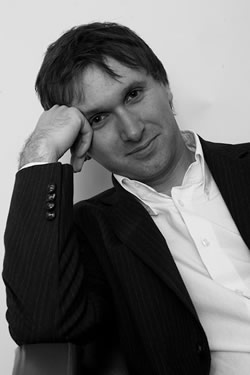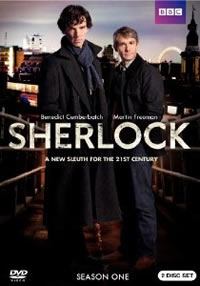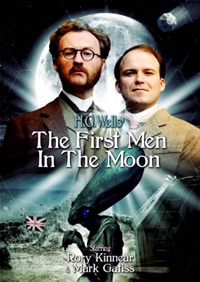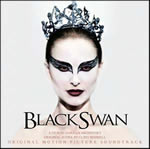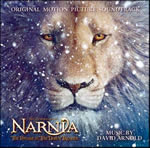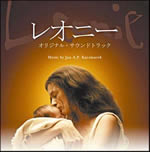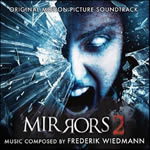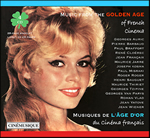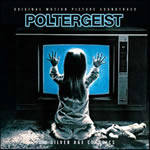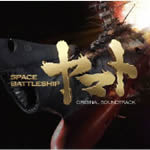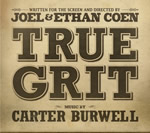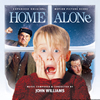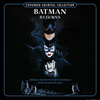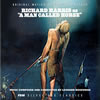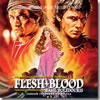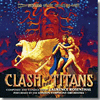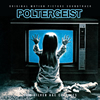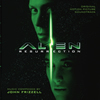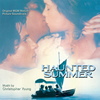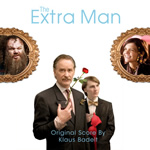
 |
Soundtrax: Episode 2010-11
December 22, 2010By Randall D. Larson
This week we interview composer Michael Price, David Arnold’s co-composer on the hit BBC TV series SHERLOCK, which updates Doyle’s master detective to the modern day and features a splendid cast, superbly witty writing, and great scores. Price describes his work with Arnold on this score and others (including the snappy unreleased spy satire, AGENT CRUSH) and his own efforts in film and television music. We also feature Alexandre Desplat in a short discussion about his new score for THE KING’S SPEECH.
Q: You began as an orchestrator, working initially with Michael Kamen and others, and later as an award-winning music editor on such films as LORD OF THE RINGS. What were some of the biggest lessons you brought with you from the orchestrating desk and the editor’s console to the composer’s workstation?
Michael Price: I worked as part of Michael Kamen’s team for five amazing years. Together with James Brett (a really great composer in his own right, check out his PLANET 51 score) we spent almost every day with Michael, starting with the film EVENT HORIZON and ending with BAND OF BROTHERS. It was the kind of dream apprenticeship that teaches you much more than just the basic techniques of film scoring. Michael’s extraordinary charisma and fearless embracing of all kinds of music and musicians meant that there was a constant swirling of chaos, creativity, and confusion. And James and I standing in the middle of it, looking at each other, trying to work out what was going to happen next! I only did a few bits of orchestration for Michael, as he had relationships with a number of brilliant Hollywood guys (Bob Elhai, Brad Warnaar etc). Our role was the hands-on, day-to-day musical business of getting Michael’s scores to the screen, and it was the relationships I built up at the London studios that led directly to LORD OF THE RINGS.
Just after I finished working on BAND OF BROTHERS, Abbey Road was looking for an extra pair of hands to work on LOTR – someone who knew the relevant software, and could cope with the inevitable late nights and shouting! I was only planning to help out for a few weeks, but accidentally became a music editor. LOTR took on a life of its own, particularly with the extended DVD versions of the films, which were a bit of challenge from a score editing point of view. Howard Shore’s crew was going through a few changes at the time, so I think may have helped them through that transition process.
I simultaneously got a call to music edit Richard Curtis’ LOVE ACTUALLY, and got on really well with the Working Title crew, which meant a slightly surreal few years, alternating Wizards and Hobbits with Bridget Jones and polite English guys stuttering.
There were so many things to take from this whole period, but I think I’ve had a fairly unique opportunity to participate in the film scoring process from script through temp score, to the writing, recording and editing, and then final dub. It’s a long and creative process, of which the six weeks of scoring is only one part, and that sometimes gets forgotten. And I’ve made some horrific cock ups at every one of those stages, which teaches you what not to do! At least the fact that I’ve done my time as a music editor in dubbing theatres means that I know what tipple to buy the mixers to turn my music up.
Q: Fast forward to the early 2000s where your career as a composer seems to have taken off. Your first original scores (according to IMDB) were for a pair of horror thrillers, SOMETHING OF MINE (1991) and BLAZELAND (1992).
Michael Price: Ah, that’s a bit of IMDB randomness, I’m afraid. And if the other Michael Price is reading this, I’m not trying to steal your credits. Honest. My first feature on my own was ASHES AND SAND in 2002. I really loved finally having an opportunity to do my own thing. Looking back I may have tried a bit too hard musically, but I did get to finally record and conduct at Abbey Road, which I still love now, and it’s a very interesting film!
Q: What opportunities did you find to begin to convey your own voice as a film composer, while meeting the dramatic needs of these first few pictures?
Michael Price: I’ve often thought about what constitutes a film composer’s musical voice. On each project, I really try to get inside the story and characters and discover the music that’s unique to that film. But I think each composer has a particular way of moving from note to note that’s like their own musical DNA, and you can discern that in whatever style they’re writing in.
In hindsight my first few projects were pretty dark, like LD50 LETHAL DOSE (a relatively scary horror film). Now I’ve done more comedy and lighter gigs, I’ve really come to appreciate the sonic palette you can use in horror and suspense. Together with amazing programmer/musicians like Matt Robertson and Rael Jones we try and make a new batch of unique sounds for each film, and we’ve built up quite a library of cool stuff now. I guess we’re all working within the musical grammar that audiences expect for the genre we’re writing for, but you just hope that you can bring something new to it, that really makes the story come to life.
Q: You began working with David Arnold on the score for the 2008 animated feature, AGENT CRUSH, a score that seemed right up David’s 007 alley. How did the two of you come to work together and how was your collaboration on this score worked out (who wrote what, etc and what kind of music was needed/asked for here?)
Michael Price: Ah, yes, AGENT CRUSH. I really hope this comes out at some point, as I think it’s got some pretty good music in it. I’d actually been working with David, helping out with various bits and pieces, since ENOUGH in 2002. He’s a fabulous, fabulous composer (although don’t tell him I said so!) and we’ve become firm friends. Although we’re very different in many ways, and I’ve got a significantly tidier studio, we’ve always seemed to enjoy collaborating musically. I’d already scored a pilot for the AGENT CRUSH guys, and when they got their funding for the feature and had Roger Moore in the voice cast, it seemed like a good time to do a new spin on an action score. David very kindly said he’d write a theme, and I wrote the rest of the score. We recorded the score with a mixture of our crews, so Nicholas Dodd, David’s long term collaborator, orchestrated and conducted, but Andrew Dudman, who I’ve worked with since the start of my career, recorded and mixed at Abbey Road.
Although it’s not for me to say, I think it’s a bit of an undiscovered gem, with ridiculously good brass playing and the whole orchestra cranked up to 11. One day it’ll come out . . .
Q: You joined up with David again that same year for the BBC series, CROOKED HOUSE, an anthology film in the spooky horror/haunted house genre. How did the two of you work together to provide the right kind of music for the three stories? Was there a need to tie the three stories together or provide a musical connection between the disparate stories or did you treat them as separate mini-movies, musically?
Michael Price: CROOKED HOUSE was an absolute pleasure. David has been friends with Mark Gatiss for years, so when Mark said he was making this show, David volunteered us both to score it (on rather a thin shoestring budget!). The show was formatted in two different ways, as both a 90 minute version and as three 30 minute movies. We scored it as the 90 to try and get that arc to work, and if I remember rightly we actually divided up the cue sheet between us, and attacked it from both ends. The three eras definitely responded to different scoring styles, but we had the themes to tie the storytelling together, so hopefully it makes a satisfying whole. It’s funny, when we’re writing together it’s a bit like being in a band, where it’s not important at all to either of us who may have come up with any particular idea. We’re just having fun and trying to get the best possible music for the show. In fact I think we genuinely don’t know who did what half the time. It really doesn’t matter. Except if anyone’s planning to do a thesis on anything, and then we’ll try and remember.
Q: You’ve scored a number of documentary films and shows. THE MOUNTAIN WITHIN is one that seems to have inspired some extraordinary music to enhance its inspirational story about seven disabled people climbing Mt Kilimanjaro. How did you focus your music to fit the style and scope of this film?
Michael Price: That’s really kind. It was the most extraordinary project, climbing right to the top of the mountain with the amazing group of disabled climbers and being privileged to be part of the whole experience. When we were on mountain I was pretty sure that I was going to include lots of the music that the Tanzanian porters sang to encourage us up the trail, but by the time I was back home, it became clear that we needed to try and make the film speak to people who haven’t had that experience. It’s a bit like looking at other people’s holiday snaps otherwise, and so the score developed into something, I hope, more universal, whilst capturing some of the spiritual side of the journey. And we did a spine-tingling vocal session with the amazing Paul Gladstone Reid in Abbey Road Studio 1, in the dark, to pay respect somehow to the spirit of the porters.
Q: The music you and David have composed for the BBC series SHERLOCK fits the style and wit of the show like a snug deerstalker. Is your collaboration a kind of Holmes/Watson association with one or the other taking the musical lead, or has it been more of an equal partnership as far as giving you both a musical voice in the show?
Michael Price: Ha! Who would be Holmes and who would be Watson? Good question. Neither of us smokes a pipe that I’m aware of, and I’m not at all sure who’s more bad-tempered. We both have our moments. SHERLOCK, again, was another genuine collaboration. We scored the pilot episode together in April 2009 and were both throwing thematic ideas in the pot and seeing which worked best. There’s a lot of nattering on the phone and sending ideas and cues back and forth, and although I’m sure we both have our strengths and weaknesses, the process seems to bring out something interesting from both of us.
As for exactly who wrote what, I think it’s safe to say that all your favorite bits, whichever they are, were by me, and any bits you think are rubbish are David’s.
Q: How was the show’s main theme derived at? What elements of the Sherlock Holmes character and the show’s modern milieu came to be embodied in that signature theme?
Michael Price: Stephen [Moffat] and Mark [Gattis]’s writing and concept for SHERLOCK was so strong, as was Benedict [Cumberbatch]’s performance, we knew there was no point in just being passive musically. The production takes a position, as does Sherlock, so we wanted to have a strong main title theme that would have a classic, distinctive drive, like the great TV themes we remember from years ago, but that would also stand up in the absolutely contemporary setting of the show. And we knew we’d need a range of really strong character and action themes to give us the propulsion we wanted for the stories. There’s an indefinably exotic quality to Sherlock Holmes, contrasting with Martin Freeman’s authentic and genuine Watson, which we wanted to reflect, but the joy of working with great story-telling and great performances is that the energy you need for the music is right on the screen in front of you.
Q: With SHERLOCK now entering its second series in the UK, how is the musical approach being developed into the new season? How is the collaborative effort between you and David changing as the series progresses?
Michael Price: I know everyone is looking forward to the 2nd season next year. In fact I just want to see the shows, never mind write the score! I do think you have to keep moving forward musically with something like this. I don’t feel comfortable with the idea of finding a formula and just sticking with it, as it’ll never have the same energy second time around. Having said that, I don’t think either David or I will know where we’re going with it until we see the first new episode. Exciting times!
As far as collaboration goes, both David and I individually have pretty full diaries at the moment, but there’s no sign of the band splitting up! Although that’s pretty much what Gary Barlow said before Robbie left Take That, so maybe I should keep quiet.
Q: How would you describe your approach to the TV movie of H G Wells THE FIRST MEN IN THE MOON? How did you tackle your first science fiction score (and a historical science fiction setting, at that)?
Michael Price: I love FIRST MEN IN THE MOON! Mark Gatiss (again) is such a wonderful writer and engaging presence on screen that this one kind of wrote itself. For scheduling reasons there wasn’t much time to finish the score, but from the first frames the storytelling was so strong, you could just ride along with the fun. We made a bunch of glassy sounds for the moon sequences, and all the more conventional instrumentation, like piano and strings, is doubled with inspired instrumental craziness by Rael Jones who I’ve worked with for several years. He’s a really talented multi-instrumentalist, and we’ve got another great relationship so can work quickly together on scores with the minimum of faffing about.
Q: What elements of the story and its adventures came to be central to that score, and how did the music develop, thematically or progressively, from that point?
Michael Price: There are character and action themes, again, like the moon theme, which you hear right at the start of the film where the little boy is looking up at the moon for the first time. You hear that later when the Professor and Bedford first see the moon close up through the windows of their craft. And a homecoming/Earth theme for when the travelers first see the Earth from space. There’s a real sense of wonder and exploration in the film which I wanted to reflect. Professor Cavor isn’t cynical and jaded, like Bedford, and I always tried to keep in mind the idea of the story being told to a child, and how that would influence my musical choices.
Q: Do you prefer working with themes in your writing? How does a particular assignment suggest to you a particular approach to its music?
Michael Price: I love tunes. There’s something characterful and engaging about memorable themes that can develop and go through a journey with you in a film. I find it really satisfying to hear them and, on a good day, try and write them myself. But they work with a certain kind of narrative film-making. I scored a Danish film for Lars von Trier’s film company, Zentropa, a few years ago, which only had maybe 20 or 25 minutes of music in the whole film. The language and purpose of the music was so different that it did take me a while to get my head around it. When I did, it was a really fascinating experience, and opened my eyes to very different ways of approaching a score. I think the film itself almost always gives you what you need to score it. You just have to listen to it. (Yoda moment over).
Q: Where would you like to see yourself in another five or eight years? What kinds of musical opportunities would you find especially challenging or rewarding
Michael Price: I’m really lucky at the moment, in that the range of projects currently in the diary has got loads of built-in variety and collaborations. There are some kinds of scores I haven’t been asked to do yet which I would love to – I haven’t done a period drama, and I’d love to do something with crazy contemporary choral music, and a neo-minimalist score, and something with a brass band, and an acoustic singer-songwriter score, and warped circus music, and ... and ... etc, etc!
Alexandre Desplat on THE KING’S SPEECH
After composing the music for over 50 European films and being nominated for two Cesar Awards, Alexandre Desplat, burst onto the Hollywood scene in 2003 with his evocative score to THE GIRL WITH THE PEARL EARRING, which earned him nominations from the Golden Globes, BAFTA and European Film Awards. His reputation was solidified by his critically acclaimed score to Jonathan Glazer's film BIRTH and Stephen Gaghan's film SYRIANA, which earned him yet another Golden Globe nomination. THE QUEEN (directed by Stephen Frears and starring Helen Mirren) garnered him his first Academy Award nomination. In the same year he was also won a Golden Globe Award for his score to THE PAINTED VEIL. Exquisite score for increasingly bigger Hollywood film scores followed, including TWILIGHT SAGA: NEW MOON and Wes Anderson’s THE FANTASTIC MR. FOX, which brought Desplat his third Academy Award nomination. He recently scored HARRY POTTER AND THE DEATHLY HALLOWS (PART 1) and is, as of this writing, set to score the eighth and final HARRY POTTER film next year.
Desplat’s latest score for is for THE KING’S SPEECH, Tom Hooper’s historical drama about King George VI of Britain, his impromptu ascension to the throne in 1936 after the abdication of George V, and the speech therapist who helped the unsure monarch become worthy of it. Desplat’s score has been released by Decca Records. In the following discussion, Desplat briefly described the challenges he faced in coming up with an approach to scoring this film, and how the score developed.
Alexandre Desplat: When I saw the first cut of THE KING’S SPEECH, I was struck by Tom Hooper’s incredible talent and his gift for using the best cinematic language for the storyline. The way he places the actors in the frame, Bertie on the edge, as if he were on the edge of reality, his use of “wide” and “fish-eye” lenses showing Bertie as a distorted man, the production design as well as a prodigious and very well-directed cast make his film a pure cinematic delight. Now this was quite a challenge for me.
How would I be able to find a way through the film and enhance it? A film in which a man is struggling to express himself in words, to show his emotions and relate his difficult childhood….a man who cannot speak. A man with long, very silent, moments.
I suggested to Tom that the music should mirror the fact that, when Bertie tries to speak he is “stuck.” A theme based upon on one, repeated, single note; on and in a rhythm i.e., a pattern of a funeral march. It is a melody which tries desperately to evolve, to find a way out, like a bird with broken wings trying to fly. It is the theme we hear as Bertie tries futilely to deliver his speech at Wembley Stadium, when he shares his pain with his wife, and when he tries to delve into his sad memories during therapy.
The score could not just be introspective. The opening title shows a light, bittersweet, Mozart-esque mood; and, there again, it is a theme that struggles to find its own completion. As the menace of war is surrounding the protagonists, the music gets more solemn and dark. The moment of joy will only appear in the score when Bertie and Lionel finally reach a rapport during the rehearsal scene at Westminster Abbey.
To convey the sense of restrained emotion and to capture the sound of the period, we found in the archives of EMI, the very microphones which belonged to and were used exclusively by George V, George VI, Queen Elizabeth and Queen Mary. And we used them at Abbey Road Studios to record the orchestra. It was a very moving experience thinking that the very microphone in which King George VI delivered his speeches was right there in front of the podium from which I was conducting. It was also a very touching moment for the English musicians, as well, who were sending the sounds of their instruments through these very special microphones.
Many thanks to Ray Costa at Costa Communications for facilitating this discussion.- rdl
New Soundtracks Releases of Note
BLACK SWAN/Clint Mansell/Sony
Clint Mansell continues his fruitful association with director Darren Aronofsky in the psychological drama, BLACK SWAN, about the conflict between dancers vying for a role in Tchaikovsky’s ballet, Swan Lake. The score is drawn, necessarily, from that ballet, and there is much of Tchaikovsky’s stirring melodies and heavy orchestral lines circulating through the surface of Mansell’s score. “How do you deconstruct a classic to expose a modern take that will somehow have respect for the original and somehow kick all that we know out on its ear?” Mansell asks. “How do you expose something new and exhilarating, born out of the original work, that can then support and enhance a totally new story that also has its roots in the original...?” The answer is found in listening to the work. Mansell hasn’t simply brought out the sheet music and replicated Tchaikovsky, he virtually assimilates it, Borg-style, into something that is a mix of Tchaikovsky and himself, giving the score a tonality that is both recognizably Tchaikovskian and yet somewhat refreshingly alien to our ears. Aided by conductor and orchestrator Matt Dunkley, Mansell’s score thus provides the Swan Lake material needed to support a story about that ballet, while more subtly supporting the underlying psychologies and conflicts between the characters as they become immersed in that milieu. Cues like “Cruel Mistress” add an implacable tonality of somberness in its progressive steps, interlaced with higher strains of contrasting ascending solo piano, while “Power, Seduction, Cries” captures a relentless fog of dark unease. Like the White Swan/Black Swan of the climactic dance, the score absorbs the duality of the competing players, and the darkness and duality of the main character’s obsession for perfection. The original ballet was a fairly dark creature, having to do with a princess who is turned into a swan by an evil sorcerer's curse (which is why the ballet’s opening made such terrific main title music for 1931’s DRACULA and 1932’s THE MUMMY; it’s heard here in “Stumbled Beginnings at 2:22, set against Mansell’s angular counterpoint, which gives it a very scarred beauty), so it doesn’t take a huge amount of reconstruction for Mansell to make it fit the present story’s similar conflict between good princess and wicked bitch. I’m not classical-music-savvy enough to identify exactly where Tchaikovsky’s notes end and Mansell’s writing takes over, but the overall result is one of bleak emotion, underplayed intentions, and ongoing apprehension that seems to fit the story very well. The score is brilliantly conveyed, playing out with increasingly more Tchaikovsky until we reach the climax of “Perfection” when the disquiet melts away in the beauty of the “princess’” performance, and both ballet and score merge into a celebratory dance of triumph.
THE CHRONICLES OF NARNIA: THE VOYAGE OF THE DAWN TREADER/David Arnold/Sony
David Arnold’s music for the third Narnia feature film occasionally treads on Harry Gregson-Williams main theme for the first two NARNIA films, which defined the musical basis for the fantasy films much as John Williams’ music for the first HARRY POTTER provided the blueprint whereby most of the other composers who have inherited the series have followed, to lesser or greater degrees as seen fit. Aside from those few touches, which remind us we’re back in the same Narnia visited by the Pevensies in THE LION, THE WITCH, AND THE WARDROBE and PRINCE CASPIAN, Arnold favors his own theme, introduced in “Opening Title” and beautifully developed throughout the score. While the Gregson-Williams theme signifies the “High King and Queen of Narnia” and re-invokes the enchantment and joy of the land of Narnia, Arnold’s theme is rich in a powerful sense of grand pageantry and reverence, a slower moving motif than Gregson-Williams’ fast-moving and magic melody, although Arnold’s is flexible enough to find itself in another of variant guises throughout the score. Arnold’s theme, which is generally associated in the film with the titular Narnian ship with which Edmund and Lucy, and their cousin Eustace, journey to carry out a mission to save Narnia, also recalls the legendary Narnian royalty the two Pevensie children enjoyed with older siblings Peter and Susan, and the nobility of its stalwart protector, Aslan. The largely episodic DAWN TREADER allows Arnold to divulge into many different sequences and musical set-pieces, while the venerable tone and through-line of the main themes reflect all that came before and all that is at stake; meanwhile the reprisals of Gregson-Williams’ Narnia theme recapture the timeless magic of the Narnia that is. “The Magician’s Island” floats with a swaying cadence of ominous strings and low winds, sparkling here and there with a phrase of the Narnia theme and gentle splashes of harp and xylophone, while a moody reflection of Arnold’s Dawn Treader Theme concludes the piece. “Lilinadil and the Dark Island” contains a subtle, furtive invocation of Gregson-Williams’ theme, which heralds a shift in tone to soft chorale; in “The Calm Before the Storm” Arnold reprises his own theme very poignantly for piano, merging it with Gregson-Williams’ from a subdued French horn bolstered a bit of quiet choral intonations, and resolving with a light and airy touch of Arnold’s theme from strings, a final respite before the orchestral cataclysm of “Into Battle.” A gentle theme for winds and strings, dabbled by harp, is provided for Reepicheep, the children’s mouse companion who becomes one of the heroes of the story; the motif reflects his diminutive countenance and large, optimistic bravery. In contrast there are a number of darker, more atmospheric pieces, much of them associated with what Arnold has called his “temptation theme,” as each of our young heroes are tested in their voyage, and with the Green Mist, which evokes the incorporeal villainy of this tale. The Mist theme carries a malevolent air of chanted choir and beaten drum, reflecting a relentless onslaught, and much counterpointed, angular choral singing, very dissonant and harsh compared to the more melodic base of the hero themes. Much of the battle music will find the Green Mist Theme engaged in orchestral clashes against the heroes’ thematic melodies.Arnold’s action cues are tremendous, the low, quaking brasses of “Dragon Attack,” surging along at a martial cadence supported by piping trumpets, bassoons, and drums suggest the pounding footfalls, clashing scales, and roaring breath of the mighty reptile. The score’s action set-piece, the 11-minute “Into Battle,” starts slowly, like a purring engine, slowly turning over – sinewy strings, undulating intonations of brass, a furtive ascension of choir – a filigree of Arnold’s theme from solo flute and then horns and strings – until the clash begins with an aggressive conflict of chanting choir and full-on orchestral prowess that leads into a rhythmic orchestration of full battle at around 3:30, bridged occasionally by phrases of the main themes to reflect personalities and purposes, that plays out strikingly through the end of the cue. In contrast, “The Duel” is comprised of renaissance-flavored ethnic pipes and drums, reflecting a local musical tradition and a slight tongue-in-cheek dance in their rhythmic exuberance. Arnold has stepped into the Narnia series with an effective splash; DAWN TREADER is an effective and engaging thematic fantasy score which roars to life with plenty of moments of exhilaration and action.
HUMAN TARGET/Bear McCreary/La-La Land Records
La- La Land Records has released Bear McCreary’s music from the first season of HUMAN TARGET in a splendid 3-CD set – two CDs of episode scores and one of additional, alternate, and bonus tracks. The show, which I am now seeking out to watch after hearing Bear’s tremendous music, is loosely based on a DC comic character who debuted in the 1970s, a private detective/body guard named Charles Chance who, here, impersonates others in order to eliminate threats to his clients’ safety. McCreary, after successfully providing uniquely diverse scores for TV’s BATTLESTAR GALACTICA, TERMINATOR: THE SARAH CONNOR CHRONICLES, and EUREKA, came to HUMAN TARGET with eagerness, realizing he could for the first time truly embrace the style of the 1970s film composers whose work fueled his passion for film scoring: Goldsmith, Elmer Bernstein, John Williams, Poledouris, Elfman, Herrmann. By assuming the vocabulary of these composers and assimilating it with his own syncretistic musical energies, McCreary came up with what he describes as “the most ambitious, audacious, and shamelessly romantic [score] of my career to date.” He adds, writing in the album notes: “I developed character themes and leitmotifs in an operatic manner, and pushed the boundaries of my orchestral composition and orchestration.” McCreary recognized that the score needed to maintain a “delicate balance between drama, comedy, suspense, and action.” The result is an amazing amalgamation of ‘70s styled thematic action scoring that sees the best of Goldsmith and company funneled through McCreary’s inventive mind. The brasses bounce and sparkle amid crashing schrapnels of percussion, the strings develop furtively, sinewy melody lines interacting with underlying chugging marcato, and every once in a while filigrees of winds take flight and whip wildly through the orchestra. And that’s just in one moment of the score (Disc 3’s “One Round”). All three discs are filled to the brim with amazing orchestral punctuation, captivating melodies, and a powerful reminder that action scoring used to be – and can still be – about more than setting up a rhythm line on your computer. The fact that this is all coming out of a TV show is amazing, and very much to the credit of HUMAN TARGET’s creator/producer Jon Steinberg and the execs at Fox who unleashed a good portion of their budget for orchestral scoring. McCreary only scored the first season of the show; composer Tim Jones (SMOKIN’ ACES 2, TV’s CHUCK) came in for Season 2 and took the music in a somewhat different direction.
LEONIE/Jan A.P. Kaczmarek/Epic Records (Japan)
For this Japanese film about the life and relationships of the early 20th American educator, editor, and journalist Leonie Gilmour, mother of the acclaimed artist and architect Isamu Noguchi. Polish-born film composer, best known for these kinds of intricately emotive, poignant, and passionate works, has provided just that kind of score for the film. The music is intently intimate, favoring solo piano over violins, cellos, and oboes. The music is serenely beautiful and a quiet joy to listen to. The score hovers just above the ground, commenting sublimely and gently upon the story as it unfolds, like a whisper of cherry blossoms drifting over a quiet stream.
MIRRORS 2/Frederik Wiedmann/La-La Land Records
Frederik Wiedmann, a former protégé of John Frizzell, returns to the horror genre, where he composed potent scores for BLOOD RANCH (2006), BENEATH (2007, with Frizzell), RETURN TO THE HOUSE ON HAUNTED HILL (2007) and THE HILLS RUN RED (2009) with this sequel to Alexandre Aja’s 2008 horror film about an evil force that used mirrors as gateways into our world. In the sequel, basically the same thing happens all over again only to someone else. Wiedmann has crafted together an excellent orchestral score that reflects (haha) a growing atmosphere of dread, bridged by explosive moments of terror and panic-driving pulsations of relentless, heartpounding strokes of violins, and the occasionally reflective shimmer of strings or synth. The score goes straight for the jugular but does so in a compellingly listenable way that works well on the album. Low, serpentine violin passages entwine around menacing piano figures and scraped percussion in “Car Crash.” “Eleanor’s Lament” contains some marvelous violin interactions, with a subtle use of haunting choir to add an ethereal, ghostly fragrance. “A Corpse in the Basement” gets going with a provocative XENA-like vocal yell and segues into a rhythmic gallop for stroking violins, pounding drums, and low piano; the ethnic voicings are especially effective again in “Revenge.” “Broken Glass for Dinner” creates a haunting sound design for chirping flights of synth patterns, hollow, woody drum raps, and those relentlessly running string figures. The score is primarily one of tonal and often eloquent atmospheres, even at their spookiest, but there is a poignant theme for protagonist Max built around a progressive mélange of piano and strings that underlines character. As the score gets further developed, the sonic texture becomes a little stranger, more electronics and more ethnic voicings join the mix, a little more sound design/synthetic material in contrast with the smooth strings and winds, through the climax of “Broken Glass” which runs up to a shining crescendo and then disintegrates, the orchestral sound dissolving like fragments of clear crystal falling into ether. It’s a good score that plays out very well on disc. Most cues are fairly short, but they do their job adequately and the album as a whole is an intriguing and persuasive listen.
MUSIC FROM THE GOLDEN AGE OF FRENCH CINEMA/Disques Cinémusique
Canada’s Disques Cinémusique has followed up their previous release, 25 Years of French Cinema Music, with this ambitious 4-CD set, culling original soundtrack music from dozens of French films from the 1940s and 1950s. The music has been selected by availability and the producer’s preference – there’s no attempt to provide a thorough overview but instead the set concentrates on various selections from the repertoire of the country’s most famous composers of that period: Georges Auric, Rene Cloerec, Maurice Jarre, Joseph Kosma, Paul Misraki, Maurice Thiriet, Georges Van Parys, Roman Vlad, and others. It’s an appealing compendium; the music is mostly I the light classical vein and there are a few songs. The four discs are organized by type of film – CD #1 contains music from feature films, CD #2 from short films and documentaries, CD #3 is devoted to library music written by composer/songwriter Roger Roger and selections from a pair of French film music albums conducted by Serge Franklin, later to become a noted film composer himself. CD #4 steps back a quarter century to present an album of library music written by Georges Tzipine for use in early newsreels and excerpts of an album Tzipine conducted in the late 1950s of the film music of other composers. Most of the music is rare and as such the album offers a valuable glimpse into French cinemusical history. A 28-page booklet contains notes in French and English by DC’s Clement Fontaine which explains the significance of each entry in the country’s cinematic legacy.
POLTERGEIST/Jerry Goldsmith/FSM
Jerry Goldsmith’s celebrated 1982 horror score for director Tobe Hooper and producer Steven Spielberg (who wielded much of the creative control on the project) has been reprised for a 2-disc definitive edition that marries the complete film score with the original LP album tracks and a number of previously unreleased tracks and alternate takes. The score has been noted for the beauty of its main theme, associated with the “They’re Here!” girl Carol Anne who is abducted by suburban ghosts, as well as for its aggressive action and attack music, the mixture of extremely modern dissonance and lyrical innocence proffered a compelling score that characterized the film’s battle between the purity of a child and the wickedness of the inhabitants of the beyond in a most pervasive and potent manner. Produced by Mike Matessino, who restored the score from its 3-track stereo film mixes, and Bruce Botnick, the film’s original recording supervisor, who remastered the score into digital. The POLTERGEIST score was originally released on an 38-minute/8-track LP by Polygram in 1982; while it presented the score’s primary material, but organized the tracks for home listening experience that did not follow film order or the score’s chronological development. The score premiered on CD in 1997 from Rhino Records and producer Nick Redman in a 68:07/13-track that album that resequenced the cues into film order and included several outtakes that did not appear in the film. For this release, FSM has gone back to the original film tracks and come up with the purported complete score elements, totaling 69:19 minutes and 15 tracks. Aside from that extra minute and 12 seconds (some of which may be accounted for in differences in track timings), the FSM album benefits from a stronger adherence to Goldsmith’s recorded cues and the re-mastery of Bruce Botnick who clearly knew the score intimately. The second disc replicates the Polygram album and then adds seven new tracks (21:31), primarily alternate takes (including Carol Anne’s Theme sans voice, and another version with an alternate vocal take), and a fascinating 3:18 track of “wild percussion” – various discrete sounds of water chimes, bass slide whistle, musical saw, resin drum and other percussion recorded to be added to the orchestral tracks as needed. This is a very spooky cue all on its own and is an intriguing example of Goldsmith’s recording process on this score. Added to the second disc are 5 tracks from Goldsmith’s re-recorded suite of cues from 1963’s THE PRIZE (4 of them originally appearing on a 1963 MGM LP and all 5 on FSM’s 2002 CD of the entire score), here remixed with more a dynamic sonic range from newly discovered masters. This was one of Goldsmith’s first major feature film scores and, while the earlier FSM release did the score justice, the improvement in sound quality on this suite is welcome. A 28-page booklet is provided with notes from Botnick and Matessino, including excerpts from my 1982 Goldsmith interview about the score, Steven Spielberg’s original LP notes, and extensive track-by-track commentary by Matessino.
SPACE BATTLESHIP YAMATO/Naoki Sato/Nichion Inc. (Japan)
The score for the new big-screen, live-action incarnation of the1974 anime TV series SPACE CRUISER YAMATO, better known under its edited US moniker STAR BLAZERS, is a broad, glorious, and marvelous orchestral score from composer Naoki Sato, a noted anime composer who won a Best Music prize at the 2006 Japanese Academy Awards for his score for the drama ALWAYS SUNSET ON THIRD STREET. Sato respectfully incorporates thematic material from Hiroshi Miyagawa’s original YAMATO scores while expanding the score into large form orchestra, which gives the TV show’s theme a huge and majestic sonority. The constant re-association with the sound of original series lends a comfortable familiarity and verisimilitude to the new version, which is quite welcome. Sato’s original material is sweeping and powerful, broad strokes based on progressive melodies that are very captivating. Gleaming brasses and sharply echoed percussion, soaring violin strains and piping winds convey a stirring almost patriotic semblance for the Battleship in its attempts to save the earth from a massive black hole. Lively in melody and rhythm, emotive passion and energizing heroics, the score generates a huge amount of excitement and adventure that keeps the story and its challenges intriguing and earnest. The score is a completely likable work on disc.
TRON LEGACY/Daft Punk/Disney Records
The French electronica duo Daft Punk has crafted a superb mix of orchestra and synths for Disney’s TRON: LEGACY, a belated sequel to their once innovative computerized sci-fi adventure, TRON (1982). Just as Wendy Carlos had done in her score to the first film, Daft Punk combines their electronic apparatus with a 90-piece symphony orchestra, recorded in London, to delineate the conflict between the real world and the computer world with sonic representations of each using a deft fusion of acoustics and electronics. Aided by orchestrator Joseph Trapanese and “orchestration consultant” Bruce Broughton, Daft Punk set out to create a Hollywood music sound that would give the score its emotive gravitas while their synth-laden set up captured an effective cybernetic/futuristic tonality that brought this new version of TRON nicely into the contemporary future of today. The score is remarkably compelling and thoroughly successful in achieving its goal. The orchestra and the electronics play together in most of the tracks, creating a score that inhabits a proper epic-styled Hollywood musical sensibility while layering on the right amount of electronic vibe to remind us we’re no longer in the real world. A recurring action motif consists of repeated series of descending marcato string figures, growing in power and echoed by heavy chords of brass, somewhat Zimmerlike but extrapolated into a progressive timbre of urgent activity that vibrates like a frantic electronic heartbeat. The motif is first introduced in “The Grid” (and obscured there by a brief snatch of Jeff Bridges’ dialog from the film) where it supports a strident, anthemic synth melody line; it forms the score’s cybernetic backbone as it becomes its own entity as a driving action theme in tracks like “Recognizer,” “Arena” (where it’s matched by a phalanx of aggressive guitar figures), “Disc Wars,” (underlying a very effective 3-note repeated high-end synth figure that progresses powerfully into a magnificent crescendo). Frequently set against it is a purposefully slow, descending brass chord reflecting an almost MATRIX-like counterpoint to the fast-moving electronic strings with its introspective and very emotional cadence; in the climactic “Flynn Lives,” the score resolves in a beautiful crescendo combining the anthem from proud, triumphal brasses, detaching from the marcato figures to soar victoriously and take us out of the computer world and back into the home of reality. “Finale” brings us fully home with a pure symphonic resolution of the score’s emotive acoustic elements, bookending both score and film with a vivid, powerful orchestral resonance, while between “Overture” and “Finale” the score achieves an excellent integration of the symphonic with the synthetic. The End Title (which appears out of sequence on CD between “Flynn Lives” and “Finale”) which reprises the earlier cue “Derezzed” in full techno style, giving moviegoers a fully satisfying denouement to accompany their exit; the orchestra comes in half way through and joins the techno vibe to reach a very happy ending. The score is thoroughly engaging and a welcome one.Frustratingly, however, the marketing department at Disney chose to license a number of additional tracks exclusively to various venues – you can buy the track “Sea of Simulation” only from amazon, two tracks, and “Father and Son” and “Outlands Part 2” are available exclusively from iTunes – but all three fortunately can be purchased individually rather than being locked as “album only.” Nokia’s Ovi service offers a fourth exclusive track, “Sunrise Prelude.” Making fans play hide and seek with extra album tracks is annoying as hidden easter eggs on DVDs. If I wanted to play games I’d buy Monopoly. Most of us just want to hear the full score, and this kind of marketing ploy mistreats Disney’s audience.
TRUE GRIT/Carter Burwell/Nonesuch Records
The score to the Coen Brother’s remake of the classic John Wayne 1969 Western TRUE GRIT, which comes out from Nonesuch on Dec. 21st, is rooted in the old-fashioned hymns of the 1800s, particularly “Leaning on the Everlasting Arms.” This is the same hymn, by the way, that pervaded so much of the film and score of the 1955 thriller, NIGHT OF THE HUNTER, where it became the whistled tune of Robert Mitchum’s murderous preacher and to many has never ceased its association to that riveting picture and has become less of a spiritual hymn and more an predator’s ostinato. To Burwell’s credit, however, he’s made the tune so much his own, and weaved it so completely into the fabric of his TRUE GRIT score, that any stigma leftover from its signature use in the Mitchum film quickly fades from memory while its playing. Within Burwell’s score, which is one of 11 Critic’s Choice Award nominations the film has garnered even before its Dec. 22 opening, this hymn and others including “Hold to God’s Unchanging Hand,” “What a Friend We Have in Jesus,” “Talk About Suffering,” and “The Glory-Land Way,” becomes gentle lullabies that both comfort and drive the character of 14-year-old Mattie Ross in her pursuit, aided by gruff, drunken U S Marshall Rooster Cogburn (Jeff Bridges), of the outlaw who shot her daddy down. Burwell said of the film’s music: “Ethan and Joel and I had the same idea – a score rooted in 19th-century hymns. The songs Mattie would sing if she had time for such frivolity. Our model was the hymn ‘Leaning on the Everlasting Arms,’ composed in 1888 by Anthony Showalter, an elder of the First Presbyterian Church in Dalton, Georgia, and used memorably in the film THE NIGHT OF THE HUNTER. This, together with other hymns of the period, forms the backbone of the score, which grows from church piano to orchestra as Mattie gets farther and farther from home.”The score’s hymnal backbone becomes its meaning and purpose, Burwell’s modernistic orchestrations for the film’s action and suspense moments (the malevolent, progressive darkness of “La Boeuf Takes Leave,” the progressing low piano, militaristic snare, and mysterious strings of “Taken Hostage;” yet even those strings segue into a furtive variant of “Everlasting Arms”) contrasted against the gentle folk melodies of these simple hymns, as Cogburn’s gruff behavior is softened by the innocence and loss suffered by Mattie. Likewise, the sonic contrast between the intimacy of solo piano and the largess of the symphony orchestra gives the score a provocative dynamic that is quite engaging. It’s an unusual approach for a modern western film (however let’s not forget that Elmer Bernstein’s original 1969 TRUE GRIT score was itself based, if not on a hymn upon a melodious title song, written by the composer and performed by Glen Campbell) but gives the film much of its emotive heart and soul, and speaks to the spiritual subtext that exists between the characters as they become reluctant partners.
Digital versions of the album, including the free MP3s that come with Nonesuch Store orders of the CD, contain a bonus track: Iris DeMent’s rendition of “Leaning on the Everlasting Arms,” which plays during the film’s closing credits.Soundtrack & Music News
All the specialty CD labels have let out all the stops and concluded 2010 with a massive barrage of incredible restored and expanded archival film scores, enough to make a film music devotee’s head explode with excitement – or his bankroll dissolve into clusters of bobbing tumbleweeds. From La-La Land we have expanded reiussues with tons of incredible unreleased music from Danny Elfman’s BATMAN and BATMAN RETURNS, Jerry Goldsmith’s STAR TREK V: THE FINAL FRONTIER, John Williams HOME ALONE, and John Frizzell’s ALIEN: RESURRECTION, and first-ever legit score releases of James Horner’s JADE and Christopher Young’s HAUNTED SUMMER, not to mention a fistful of cool and kitschy Les Baxter pop scores from the ‘60s. FSM has provided significant archival re-releases of Goldsmith’s POLTERGEIST (reviewed above) and Leonard Rosenman’s A MAN CALLED HORSE, plus CD premieres of the music from TV’s KUNG FU and HAWAII FIVE-0, John Scott’s NORTH DALLAS FORTY and Frederick Hollander’s delightful if mostly forgotten ‘50s fantasy score to THE 5000 FINGERS OF DR T. Intrada closed out the year with such essential expanded releases as Laurence Rosenthal’s 1981 CLASH OF THE TITANS, Basil Poledouris’ FLESH + BLOOD, and Jerry Goldsmith’s iconic action score to FIRST BLOOD; not to mention such first-ever releases of classic ‘90s action scores to NAVY SEALS (Sylvester Levay) and BLACK SEA RAID (Terry Plumeri), and, from the ‘50s, Lyn Murray’s ON THE THRESHOLD OF SPACE paired with Paul Sawtell’s THE HUNTERS, marvelous action scores each. Varese Sarabande’s last batch of limited club releases dazzled us with premiere releases of John Williams’ score to Hitchcock’s swan song, FAMILY PLOT, Maurice Jarre’s TAPS, and a reissue of Bill Conti’s KARATE KID score from their sold out box-set containing all four KARATE KID scores. Kritzerland announced its final two release of the year as Burt Bacharach’s original CASINO ROYALE score, and Dusan Radic’s full-blooded, grand adventure-filled score for 1965’s GENGHIS KHAN. Perseverance Records released a resequenced version of Ennio Morricone’s RED SONJA, long sold out at Varese Sarabande, along with Hans Zimmer’s first Hollywood score, RAIN MAN, an expanded issue of Christopher Young’s UNFORGETTABLE, and a massive multi-disc soundtrack to all of the PUPPET MASTER horror films. BSX Records has added premiere releases of Mark Snow’s moody and X-FILES-ish thriller score, NIGHT SINS, along with a very faithful new rendering of Vangelis’ score to THE BOUNTY which seems to do fairly well in the absence of a true original soundtrack anywhere on the horizon. Silva Screen reissued THE WICKER MAN and TERMINATOR 2, keeping both of these wonderful scores in print. And labels like Tribute Film Classics, Tadlow/Prometheus, and Chandos have given us some masterfully re-recorded renditions of vintage scores like Steiner's ADVENTURES OF DON JUAN and ARSENIC AND OLD LACE (coming up from Tribute), Poledouris’ CONAN THE BARBARIAN, Tiomkin’s THE ALAMO, and Jarre’s LAWRENCE OF ARABIA (from Tadlow/Prometheus), and samplers like The Film and TV Music of Christopher Gunning from Chandos. This isn’t even to mention the vastly important repertoire of Italian film scores preserved and beautifully restored by GDM, Beat, Quartet, and Digitmovies; the French scores rescued from oblivion by Canada’s Disques CinéMusique; and those provided by England’s Harkit, Japan’s Verita Note, Avanz, and Ark Square, and others.
Regrettably, by necessity almost all of these released are limited editions, ranging from 1,000 to 3,500 or so units, which means that many have already sold out and must be found, at varying degrees of inflated prices, on eBay and other outlets. But the sheer number of these, and others, being made available are heartening. It’s a good time to me a film music collector. Better if you’re a rich one, but good all the same.
As Jon Burlingame reported in Monday’s online Variety, both Carter Burwell’s TRUE GRIT and Clint Mansell’s BLACK SWAN scored have been deemed ineligible for Oscar contention, as both rely largely on pre-existing music (19th Century hymns for GRIT, Tchaikovsky for SWAN). With the previous “adapted score” category deleted some years ago, neither scores are eligible for consideration, despite their effectiveness as film music. Seems the Academy is again more concerned with its rulebook than in allowing honors to be bestowed on the most effective score. More logical are the disqualifications for THE KIDS ARE ALRIGHT and THE FIGHTER as both use more songs than score in their soundtracks.
Burlingame had earlier argued the Academy reinstate the “Adapted Score” category so that scores like these can have a chance of consideration. He noted on Facebook that if THE STING, 1973’s winner for best adapted score, was under contention today, it would likely be ineligible – despite it being one of 1973’s best scores. See: www.variety.com/article/VR1118029326Christophe Beck has won an HMMA (Hollywood Music in Media) for “Best Original Score: Indie/Short/Documentary” for his moody and introspective score to the critically-acclaimed Paramount Vantage documentary WAITING FOR SUPERMAN (reviewed in my Sep. 24th column). Directed by Academy Award-winner Davis Guggenheim (“An Inconvenient Truth”), the documentary is a deeply personal exploration of the current state of public education in the United States, and how it has affected our children. The score released by Lakeshore Records is available in stores on CD and online through Amazon.com and iTunes. See: www.hmmawards.com
Klaus Badelt, through his label and web site, Label Zero, is making a number of his scores available. After digital and CD versions of THE EXTRA MAN and A BOUT PORTANT, Badelt now offers a download only version of his score for SMALL WORLD, Bruno Chiche’s adaptation of Swiss writer Martin Suter’s eponymous novel.
http://store.klausbadelt.com/album/small-world-original-score?auto=mp3-320Perseverance Records is offering a special deal for those who order Simon Boswell’s score to the 2000 remake of JASON AND THE ARGONAUTS – entering the coupon code "Lambro1012" will get you The Film Music of Phillip Lambro for only $2.95 plus shipping. Lambro is a provocative but severely underappreciated modern composer of concert works who scored a fistful of soundtracks in the ‘70s, including the intense horror score, CRYPT OF THE LIVING DEAD and the jazzy MURPH THE SURF (both of which Perseverance has released on their own). The Film Music compilation contains three documentary and one feature film score – and album notes by yours truly. www.perseverancerecords.com
The Holiday edition of Film Score Monthly online has been posted, with widespread coverage of all the new holiday movies: an interview with Carter Burwell on his score for TRUE GRIT, a chat with Clint Mansell on BLACK SWAN; an audio interview with David Arnold on SHERLOCK and NARNIA: VOYAGE OF THE DAWN TREADER an much more, including coverage of Anton Sanko’s RABBIT HOLE, A.R. Rahman’s 127 HOURS and James Hannigan’s music for the latest HARRY POTTER video game. www.filmscoremonthly.comRandall D. Larson was for many years senior editor for Soundtrack Magazine, publisher of CinemaScore: The Film Music Journal, and a film music columnist for Cinefantastique magazine. A specialist on horror film music, he is the author of Musique Fantastique: A Survey of Film Music in the Fantastic Cinema and Music From the House of Hammer. He now writes for CinefantastiqueOnline and has written liner notes for more than 70 soundtrack CDs for such labels as La-La Land, Percepto, Perseverance, Harkit, and BSX Records. For more information, see: www.myspace.com/larsonrdl
Randall can be contacted at soundtraxrdl@gmail.com


